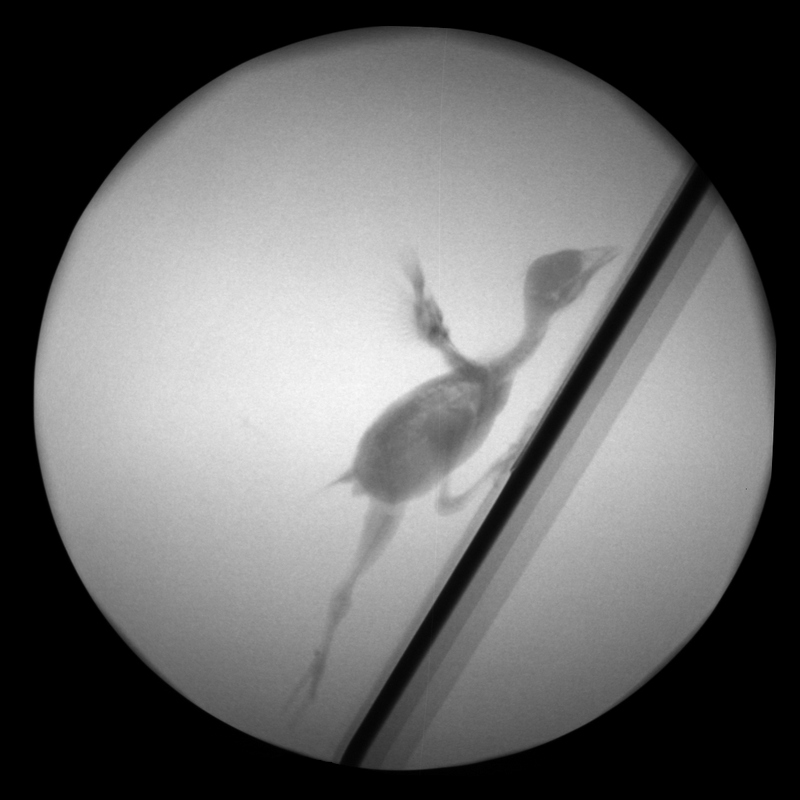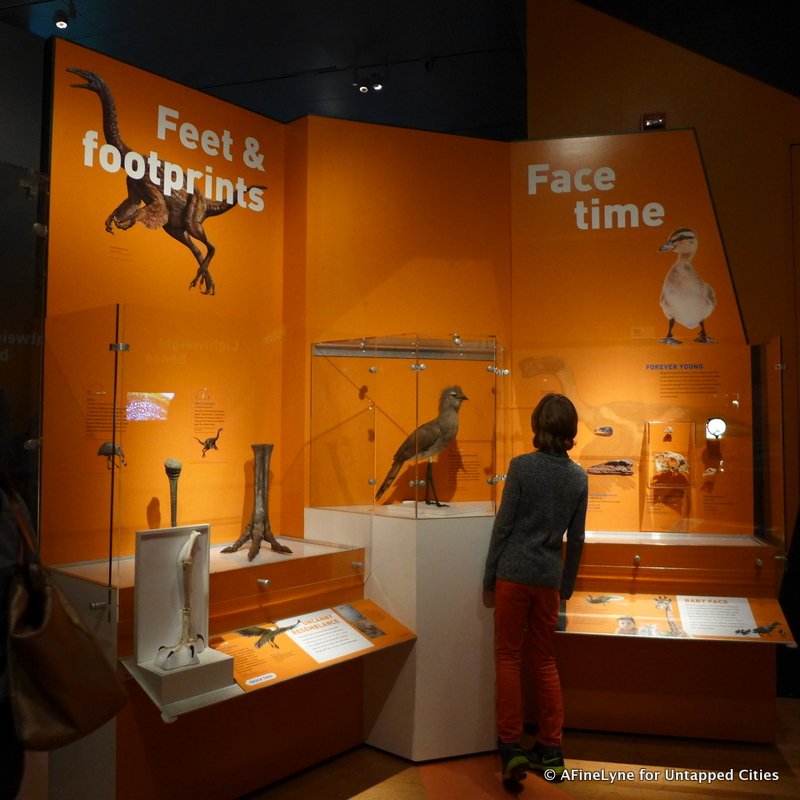 A twenty-three foot-long tyrannosaur (Yutyrannus huali) with a shaggy coat of filaments called porto-feathers
A twenty-three foot-long tyrannosaur (Yutyrannus huali) with a shaggy coat of filaments called porto-feathers
On the heels of the unveiling of the 122 foot-long Titanosaur, The American Museum of Natural History will open a new exhibit, Dinosaurs Among Us. The exhibit will feature rarely seen fossils and life-like models, with several interactive exhibits, giving a glimpse into dinosaurs that dominated our planet for about 170 million years, highlighting how their evolutionary legacy lives on all around us today. The exhibit amazes the viewer by pointing out the shared features including feathers, wishbones, enlarged brains, and respiratory systems. Exploring the link between birds, living descendants of dinosaurs, and their extinct ancestors, below is a preview of what you will see when the doors open on March 21st.

The exhibit is filled with recent biological research, much of which is being done by scientists training and working right at the museum. Here they bring the boundaries between animals we call birds, and those we call dinosaurs, together by showing visitors living descendants in shared common ancestors. This exhibit is based on evidence discovered over the last two decades.
Early birds and dinosaurs had feathers of different colors, sizes and shapes, that served a wide range of functions. Using tools ranging from particle accelerators to genetic analysis, researchers can learn the color these feathers were in life, and learn more about the genes that control feather development.
We can’t scroll past Yutyrannus huali without mentioning that its name means “beautiful feathered tyrant.” With a weight of about 1.5 tons, it was known to be a fearsome predator and a relative to the tyrannosaurus rex.
 This interactive exhibit had kids thoroughly engaged in helping to hatch a dinosaur egg
This interactive exhibit had kids thoroughly engaged in helping to hatch a dinosaur egg
The above climbable interactive exhibit is a full-scale model of a nest with twenty eggs discovered in China, likely laid by one of the largest oviraptorosaurs ever found, Gigantoraptor.
Visitors can look through a microscope to view the layers of eggshells, which can tell scientists what kind of dinosaur laid the egg. Through the lens, growth rings, which allow researchers to track maturation in dinosaurs, can be seen. This research can tell us about the transition from non-bird dinosaurs to modern birds.
In the interactive exhibit Will It Fly, visitors can build a model bird, using computer modeling techniques with simulation software, by varying the wings, breastbone, and body size – hit the button and see if your dinosaur can be digitally launched. There are eight different dinosaurs to interact with, ranging from Archaeopteryx lithographica, sometimes called “the first bird,” to Velociraptor mongoliensis.
 Image of Khaan fossils, courtesy of The American Museum of Natural History
Image of Khaan fossils, courtesy of The American Museum of Natural History
 Image of X-ray locomotion study courtesy of The American Museum of Natural History
Image of X-ray locomotion study courtesy of The American Museum of Natural History
The X-ray studies show that baby birds flap their wings to help them climb steep slopes. The force generated by flapping, pushes them forward and upward – improving traction as they climb. Some of these studies were done by researchers at the Museum.
Dinosaurs Among Us is curated by Mark Norell, Macaulay Curator in the Division of Paleontology and the division’s chair. The exhibit will run from March 21 to January 2, 2017, and is located at The American Museum of Natural History, Central Park West at 79th Street.
Read more about The American Museum of Natural History. Read more about Titanosaur. Contact the author at AFineLyne.


















